Categories:
The AR-15 platform, renowned for its versatility and adaptability, allows for numerous modifications to enhance its performance. One such modification is the addition of a muzzle device, a critical component affixed to the barrel’s end. Muzzle devices serve various purposes, primarily focused on improving the shooting experience by mitigating recoil or reducing the visible muzzle flash that occurs when a shot is fired.
Understanding the functionalities and advantages of different muzzle devices is essential for any AR-15 enthusiast or professional who seeks to optimize their weapon’s performance. Muzzle devices come in several forms, including compensators, muzzle brakes, and flash hiders. Each type addresses a specific aspect of the firing process, tailored to meet different shooter needs and preferences. For instance, compensators are designed to counteract muzzle climb, a phenomenon where the barrel rises after each shot due to recoil forces.
By venting gases upward and sometimes to the sides, compensators help maintain target alignment, allowing for quicker and more accurate follow-up shots. Muzzle brakes, on the other hand, are engineered to reduce the overall recoil felt by the shooter. Similar to compensators, they redirect propellant gases but often do so more aggressively, channeling the gases outward and backward. This redirection helps to counterbalance the rearward force produced when a bullet is fired.
As a result, muzzle brakes can significantly lessen the shooter’s perception of recoil, making the shooting experience more comfortable, especially during prolonged firing sessions or with larger caliber ammunition. Flash hiders, meanwhile, focus on reducing the visible signature of the muzzle flash. When a bullet exits the barrel, the burning propellant gases can produce a bright flash, which can momentarily impede the shooter’s vision and reveal their position.
Flash hiders disperse these gases in such a way that the flash is diminished, thereby improving visibility and reducing the chances of the shooter’s location being detected. Selecting the right muzzle device for an AR-15 involves considering the shooter’s specific needs, whether it’s enhancing accuracy through recoil management, improving comfort by reducing perceived kick, or maintaining stealth and visibility in low-light conditions.
To fully appreciate how an AR-15 muzzle device can reduce recoil or muzzle flash, it is crucial to understand the core concepts of recoil and muzzle flash themselves. Recoil is the backward force exerted on a shooter when a gun is discharged. This phenomenon occurs due to Newton’s third law of motion, which states that for every action, there is an equal and opposite reaction.
When a bullet is rapidly expelled from the barrel of a gun, it generates a significant amount of force in the opposite direction. For shooters, this recoil effect can impact accuracy and comfort, making follow-up shots more challenging.
Muzzle flash, on the other hand, is the visible light or flash that is emitted from the barrel when a round is fired. This flash is a result of the high-pressure, high-temperature gases that explode out of the barrel once the bullet exits the gun. These gases are a byproduct of the gunpowder combustion process and are typically ignited as they exit the barrel, creating a bright flash.
The intensity of the muzzle flash can give away the shooter’s position in low-light conditions and can be momentarily blinding, both to the shooter and to those nearby.
Different muzzle devices such as compensators, muzzle brakes, and flash hiders are employed to mitigate these issues. A compensator redirects the escaping gases to counteract the upward or sideways movement of the gun barrel during shooting, thus making the gun easier to control and enhancing accuracy for rapid firing. Muzzle brakes focus more on countering the backward force of recoil by channeling gases to decrease the kick felt by the shooter.
Flash hiders, meanwhile, serve to minimize the visible muzzle flash, often by dispersing the gases in such a way that reduces their intensity and visibility.
These devices are installed at the end of the barrel and work by manipulating the gases that are expelled during firing. By understanding the principles behind recoil and muzzle flash, one can better appreciate the engineering and functionality of these various muzzle devices. Whether the goal is to improve shooter comfort, accuracy, or tactical advantage, selecting the right muzzle device can make a considerable difference in the shooting experience.
The AR-15 muzzle devices come in various configurations, each designed to serve a specific function or a combination of functions, primarily to manage recoil, reduce muzzle rise, or conceal muzzle flash. On one hand, compensators are a popular choice among shooters who seek to counteract the natural rise of the muzzle that occurs when a round is fired. By redirecting gases upward, compensators help keep the rifle’s barrel level and enhance shot accuracy during rapid fire.
This makes them particularly favored by competitive shooters and those who engage in fast, repetitive shooting scenarios.
On the other hand, muzzle brakes provide a different type of recoil management. They are designed to minimize the rearward motion or “kick” felt by the shooter when the gun is discharged. Through a series of angled ports, muzzle brakes vent gases to the sides and slightly backward, significantly diminishing perceived recoil. This reduction can result in faster follow-up shots and increased comfort over prolonged shooting sessions.
However, they can be quite loud and produce substantial side blast, which can be inconvenient for those shooting next to you.
Flash hiders or flash suppressors focus on reducing visible muzzle flash. These devices disperse the burning gases emitted from the barrel to diminish the brief, bright flash that occurs when a shot is fired. The reduced flash can be beneficial in low-light or nighttime conditions, helping to maintain the shooter’s night vision and prevent easy detection by adversaries. Military applications often incorporate these devices to enhance stealth and reduce the signature of fired rounds.
There are also hybrid devices that integrate the benefits of compensators, muzzle brakes, and flash hiders. These multi-functional devices offer a balance between recoil management, muzzle rise control, and flash suppression, making them versatile for a variety of shooting contexts. As a result, they are increasingly popular for shooters who seek the advantages of multiple features without the need to switch between specialized devices.
In summary, the selection of an AR-15 muzzle device typically depends on the shooter’s specific needs and the intended application of the rifle. Whether seeking to mitigate recoil, manage muzzle rise, or reduce flash, there is a specialized or hybrid solution available to enhance shooting performance and comfort.
Muzzle devices are critical components on many guns, especially the AR-15, that serve to improve shooting performance by reducing recoil. Recoil, which is the backward movement of the gun when it is discharged, can affect accuracy and speed in subsequent shots, making handling more difficult, particularly in rapid fire scenarios. By attaching a muzzle device like a brake, compensator, or hybrid device at the end of the barrel, shooters can significantly mitigate the recoil forces, thereby enhancing control and precision.
The primary way muzzle devices reduce recoil is through redirection of gas. When a bullet is fired, the propellants inside the cartridge combust and generate high-pressure gas. This gas expands and propels the bullet down the barrel and out of the muzzle. In the absence of a muzzle device, this gas would exit directly out the front end of the barrel, contributing to the gun’s rearward motion.
Muzzle brakes and compensators are designed with strategically placed vents or ports that redirect these gases to the sides, upwards, or even backwards. By doing so, they utilize the escaping gas pressure to counteract the forces pushing the gun backwards, thereby reducing the recoil felt by the shooter.
Additionally, some advanced muzzle devices use baffles to dissipate gas more efficiently. As the gas exits the barrel, it encounters the baffles, which break up and slow down the gas flow, further diminishing the recoil momentum. This controlled release of gas not only reduces backward thrust but can also minimize muzzle rise, which is the upward movement of the gun’s barrel upon firing.
This combined effect results in a more stable shooting platform, allowing for faster follow-up shots and improved accuracy.
The importance of recoil reduction goes beyond just comfort — for tactical applications and competitive shooting, managing recoil effectively can make the difference between hitting or missing a target. Therefore, the proper selection and installation of a muzzle device can be a game-changing upgrade for an AR-15, tailoring its performance to the specific needs and preferences of the shooter.
Muzzle devices play a crucial role in reducing muzzle flash, a critical concern for both military personnel and civilian shooters. Muzzle flash occurs when the unburnt gunpowder exits the barrel and ignites on contact with the outside air, creating a bright and often distracting flash. This brief but intense burst of light can have several detrimental effects, such as revealing the shooter’s position in low-light conditions and causing temporary night blindness, thereby impairing vision and aim during rapid-fire situations.
Muzzle devices designed to minimize muzzle flash, commonly known as flash hiders or flash suppressors, work by dispersing the escaping gases and unburnt powder more effectively. The most common design involves a series of slots, vents, or prongs arranged around the device. When a shot is fired, the gases escape through these openings, which disrupts and cools the expanding gases more quickly than they would otherwise.
This rapid dispersion reduces the likelihood that the unburnt powder will ignite, thus significantly diminishing the visible flash.
The physics behind this dispersion involves increasing the surface area where the gases mix with the surrounding air, thereby cooling them more rapidly. Additionally, by directing the gases away from the direct line of sight, these devices help minimize the flash’s impact on the shooter’s vision. Some advanced flash suppressors even employ flash cones or internal geometries designed to lengthen the path that gases travel before they exit into the atmosphere.
This extended pathway allows for more complete combustion of the remaining powder within the confines of the concealing structure.
Yet another strategy includes the use of materials and coatings that can absorb and dissipate heat more efficiently. This ensures that any escaping gas is further cooled, diminishing its capacity to ignite in the air. The result of these efforts is a marked reduction in the visible muzzle flash, thereby enhancing the shooter’s concealment and maintaining their situational awareness. All these engineering innovations work in tandem to make shooting safer, more efficient, and less conspicuous, thereby meeting the dual goals of operational effectiveness and user safety.
Installing a muzzle device on an AR-15 is a critical process for anyone looking to mitigate recoil or reduce muzzle flash. The first step in the installation process is ensuring that the gun is unloaded and secure, prioritizing safety above all else. Once the weapon is confirmed to be empty, the existing muzzle device, if there is one, needs to be removed.
This often involves loosening any set screws and using a proper-sized wrench to unscrew the device from the barrel. It’s important to remember that the barrel can become marred if too much force is applied, so taking care to use gentle, steady pressure is crucial.
After removing the old device, the threads on the barrel should be thoroughly cleaned. This can be done using a wire brush or cloth to remove any fouling, residue, or carbon deposits that may have accumulated. Proper cleaning ensures a solid fit for the new muzzle device and helps prevent misalignment. Once cleaned, a small amount of high-temperature thread locker can be applied to the threads of the barrel to ensure a secure attachment.
Next, take the new muzzle device and begin threading it onto the barrel by hand. This initial hand-tightening helps ensure that the device is screwed on straight. After hand-tightening, use an appropriate wrench to secure the muzzle device further, aligning it correctly as required by the specific design of the device. Some muzzle devices require a crush washer or shims to properly index the device, ensuring that it faces the correct direction.
It’s crucial to follow the manufacturer’s instructions for the specific muzzle device being installed to avoid any issues with improper alignment.
In the final step, double-check that everything is tightened securely and aligned properly. Once installed, it’s wise to test-fire the gun in a controlled environment to ensure that the new muzzle device is functioning as intended, reducing recoil or muzzle flash effectively. This installation process, when followed diligently, enhances the gun’s performance while adhering to safety protocols.
When it comes to selecting the right muzzle device for your AR-15, it’s essential to consider both functionality and desired outcome. The primary types of muzzle devices include flash suppressors, compensators, and muzzle brakes, each serving different purposes. Flash suppressors are designed to reduce the visible flash at the end of the barrel when a shot is fired. This can be particularly useful in low-light conditions or for tactical applications where minimizing the shooter’s visible signature is crucial.
On the other hand, compensators and muzzle brakes are focused on managing recoil and muzzle rise. Muzzle brakes are incredibly effective at reducing the backward movement of the rifle when a shot is fired by redirecting the gases that exit the barrel. This helps in maintaining better control of the rifle, allowing for quicker follow-up shots. Compensators, though similar, primarily work to control muzzle rise by venting gases upwards, which helps in keeping the barrel from climbing after each shot.
It’s also worth noting that hybrid devices exist, combining the characteristics of both brakes and flash suppressors or compensators and flash suppressors. These hybrids aim to provide a more balanced performance by addressing multiple issues simultaneously. The type of shooting you plan to do is a significant factor in choosing a muzzle device. For instance, competitive shooters might prefer a compensator or muzzle brake for quicker target reacquisition, whereas someone concerned about low-light engagement might opt for a flash suppressor.
Additionally, the build quality and material used in the device are important. High-quality materials such as stainless steel or treated alloys can offer greater durability and longevity.
Another aspect to consider is the legal regulations surrounding muzzle devices in your area, as certain types may be restricted. Similarly, the ease of installation is worth contemplating, especially for those who may not be as familiar with the technical aspects of their gun. Ultimately, choosing the right muzzle device is a decision that balances your specific needs with the technical benefits offered by each type, aiming for enhanced performance and a more enjoyable shooting experience.
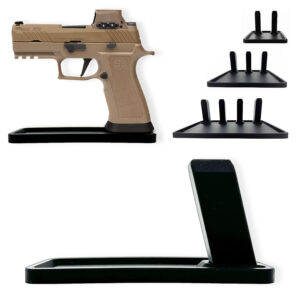

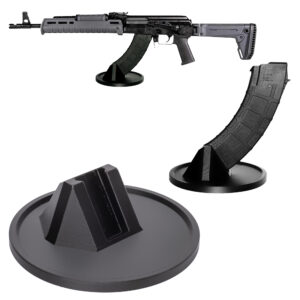

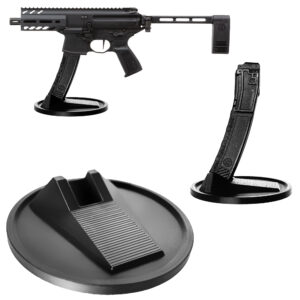
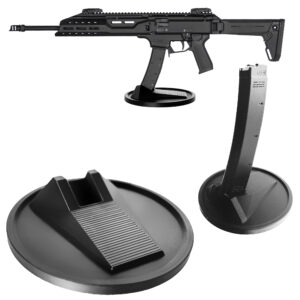

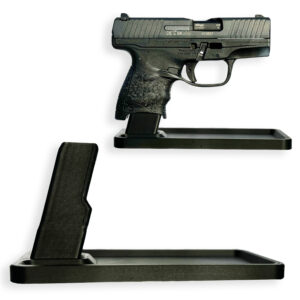
Colt
Colt M4 Carbine
Colt LE6920
Colt AR-15 A4
Daniel Defense
DDM4 V7
DDM4 V9
DDM4 V11
DDM4 ISR (Integrally Suppressed Rifle)
Smith & Wesson (S&W)
M&P15 Sport II
M&P15 Tactical
M&P15T
Bravo Company Manufacturing (BCM)
BCM Recce-16
BCM Recce-14
BCM MCMR Series
Aero Precision
M4E1 Series
AC-15
AR15 Pistol (Various Configurations)
Ruger
Ruger AR-556
Ruger SR-556
Ruger AR-556 MPR (Multi-Purpose Rifle)
Springfield Armory
Saint Victor
Saint Edge
Saint AR-15
PSA (Palmetto State Armory)
PSA PA-15
PSA AR-V
PSA Jakl (AR Pistol)
FN America
FN 15 Tactical Carbine
FN 15 Patrol
FN 15 DMR
Wilson Combat
Recon Tactical
Super Sniper
Protector Carbine
SIG Sauer
SIG M400 Tread
SIG M400 Elite
SIG M400 SDI
LWRC International
IC DI (Direct Impingement)
IC SPR
IC A5
Bushmaster Guns
XM-15 QRC
Bushmaster MOE
XM-15 Patrolman
Rock River Arms
LAR-15 Entry Tactical
LAR-15 Predator
LAR-15 Elite Comp
Stag Arms
Stag 15 Tactical
Stag 15L (Left-Handed Models)
Stag 15 Valkyrie
Noveske Rifleworks
Noveske Gen 4 N4
Noveske Space Invader (AR Pistol)
Noveske Recon
Anderson Manufacturing
AM-15 Optic Ready
AM-15 M4 Carbine
AM-15 Precision Rifle
Adams Arms
AA-15 Piston Rifle
P2 AARS (Adams Arms Rifle Series)
Black Rain Ordnance
SPEC15 Series
BRO Predator
Fallout 15
Diamondback Guns
DB15 Series
DB15CCMLB
DB15EB
Del-Ton Inc.
DTI-15
Del-Ton Echo 316H
Sierra 316M
Windham Weaponry
Windham SRC
Windham VEX-SS
Windham RMCS-4 (Caliber Conversion System)
Christensen Arms
CA-15 G2
CA-15 Recon
CA-15 Titanium Edition
Patriot Ordnance Factory (POF-USA)
Renegade Plus
P415 Edge
Revolution DI
LaRue Tactical
PredatAR
OBR (Optimized Battle Rifle)
LaRue Stealth 2.0
Battle Arms Development
Workhorse Patrol Carbine
BAD556-LW (Lightweight)
Authority Elite Rifle
Faxon Guns
Ascent AR-15
FX-19 (AR Pistol)
Streamline Ultralight Series
KE Arms
KE-15 SLT (Super Lightweight Tactical)
KE-15 Scout Carbine
Primary Weapons Systems (PWS)
MK1 MOD 2-M
MK116 PRO
MK107 (Piston AR Pistol)
ZEV Technologies
ZEV Core Elite Rifle
ZEV AR15 Billet Rifles
Franklin Armory
BFSIII AR-C1
Militia Model
F17-L (Chambered in .17 WSM)
Seekins Precision
SP15 DMR
NX15 Skeletonized Rifle
Havak Bravo
Aero Precision (Additional Models)
EPC-9 (Pistol Caliber ARs)
VG6 AR Rifles
Barrett Guns
REC7 DI
REC7 Gen II
CMMG
MK4 RCE
Resolute 300
Banshee (AR Pistol)
DPMS Panther Arms
Panther Oracle
Panther LR-308
H&K (Heckler & Koch)
HK MR556A1
HK416 (Military Variant)
Rock Island Armory (Armscor)
VR-80 Tactical AR (Shotgun AR Platform)
Troy Industries
Troy SPC-A3
Troy PAR (Pump Action AR)
Wilson Tactical
Tactical Recon AR
Protector Series
F1 Guns
FDR-15 Skeletonized Rifle
BDRx-15 Series
Juggernaut Tactical
JT-15
JT-10 Precision Rifle
AeroSurplus
Surplus AR-15 Rifles (Budget Models)
Thunder Tactical
AR-15 Basic Carbine
Tactical Builder Sets
Radical Guns
RF-15
Forged AR-Series
Dark Storm Industries
DS-15 Featureless Rifles
DS-10 Typhoon
DRD Tactical
Paratus
Aptus AR Rifles
Bear Creek Arsenal
BCA-15
AR Complete Upper Builds
Aero Survival Rifles (ASI)
ASR Tactical Series
Tactical Edge
WARFIGHTER Series
AR-15 Lightweight Rifles
Lone Star Armory
TX15 DMR
TX15 Carbine
HERA Arms
HERA H7
HERA AR-15 Lower Builds
IWI (Israeli Weapon Industries)
Zion-15
DRD Tactical
Tactical Modular Rifles
Quick-Takedown Rifles
V Seven Weapons
1776 Rifle
Hyperlite Rifle
Core Rifle Systems
Core15 Tac III
Core15 Patrol Rifle
Armalite (Original AR-15 Creator)
M15 Tactical
M15 A4 Carbine
DEF15 (Defensive Sporting Rifle Series)
PSA (Palmetto State Armory Additional Models)
PSAK-47 Hybrid (AR-AK Style Hybrid)
PSA Dagger (Pistol Caliber Configurations)
Odin Works
OTR-15
Odin Recon Rifle
Maxim Defense
MDX-508 PDX (Compact AR Pistol)
MDX-510 Rifle